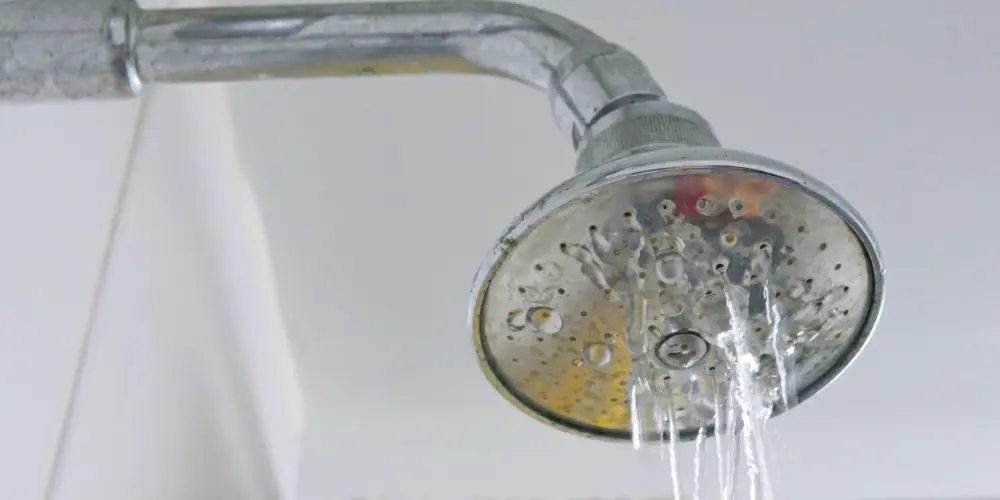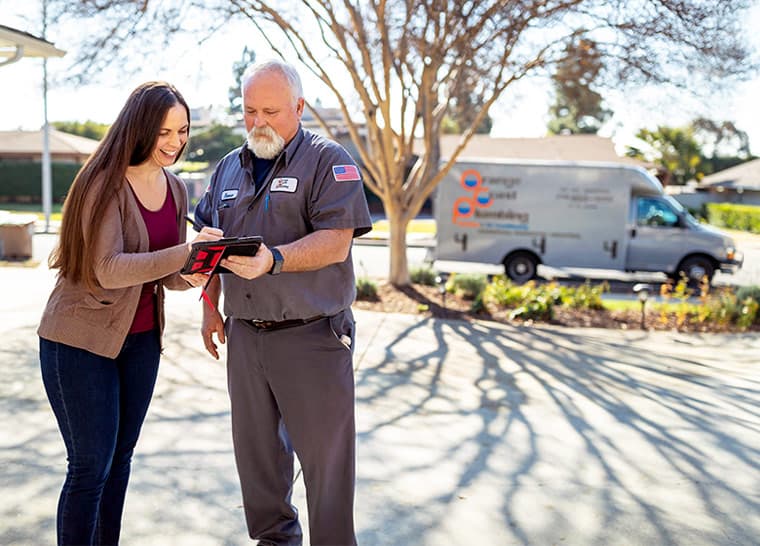How frustrating.
You hop into the shower, adjust the water temperature and pressure so they’re ju-u-ust right, and lather up — when the water pressure drops to zero. Or so it seems.
If this were an occasional nuisance, you could live with it, but it seems to happen daily. And the problem seems to be getting worse. What gives?
Fixing low water pressure may involve a simple solution, like cleaning a shower head, or something much more complex, like digging up pipes and installing a new main water line. In this blog, we’ll help you assess the situation — preferably before you start losing hair or sanity.
Identify the Cause
Common reasons for low water pressure include:
- Clogged shower heads or faucet aerators: Hard water deposits and debris can accumulate over time, restricting the water flow.
- Old or corroded pipes: Pipes can develop build-up or corrosion on the inside, reducing their diameter and capacity for water flow.
- Malfunctioning pressure regulator: If your home has a pressure regulator, it may need to be adjusted or replaced.
- Leaky pipes: Pressure drops at the destination as water escapes the pipe.
- Closed or partially closed shut-off valves: Valves sometimes get bumped or turned off during maintenance work.
- Water main issues: Occasionally, the issue is with the municipality’s main supply line. Check with your neighbors to see if they’re experiencing similar problems.
Troubleshooting Tips
1. Inspect Shower Heads & Faucet Aerators
- Remove shower heads and faucet aerators.
- Soak them in a vinegar solution to dissolve hard water deposits.
- Rinse thoroughly and reattach to check if water pressure improves.
2. Check for Pipe Corrosion
- Inspect exposed pipes for signs of corrosion or build-up.
- If you suspect corrosion, contact a plumber to evaluate and potentially replace the affected pipes.
3. Test the Pressure Regulator
- Locate the pressure regulator, typically near the main water line entry.
- Use a pressure gauge to check the current setting.
- If the pressure is too low, adjust it according to the regulator’s instructions or consult a professional if the adjustment doesn’t help.
4. Look for Leaky Pipes
- Examine visible pipes for any drips or water stains that indicate leaks.
- Listen for running water sounds when all faucets are turned off.
- If you discover a leak, repair it immediately or call a plumber.
5. Verify That Shut-Off Valves Are Fully Open
- Check all shut-off valves, including those under sinks and near appliances.
- A partially closed valve can reduce water pressure.
6. Consult Your Neighbors & Water Utility
- Ask neighbors if they’re experiencing similar issues to determine if there’s a broader problem.
- Contact your local water utility to report the issue and inquire about ongoing maintenance or known problems with the main supply line.
Installing a Water Pressure Booster
For persistent low pressure, a water pressure booster can be a game-changer. Here’s how to install one:
- Select a location near the main water line entry point. The area should be accessible and have enough space for the pump and tank.
- Shut off the main water supply to prevent flooding and ensure a dry working environment.
- Open the faucets to allow any remaining water to drain from the pipes.
- Use a pipe cutter to make a clean cut into the main water line where the booster will be installed. The cut must be precise to facilitate a smooth installation.
- Follow the manufacturer’s instructions to install the booster pump. This usually involves connecting the pump’s inlet and outlet to the main water line, using appropriate fittings, and creating a tight seal to prevent leaks.
- The booster pump must be connected to a power source. Ensure the electrical connections comply with local building codes and regulations. If you’re unfamiliar with electrical work, consult an electrician.
- Slowly turn the main water supply back on and check for leaks around the newly installed pump and connections.
- Open several faucets to see if the water pressure has improved and the booster pump is functioning correctly.
Is This a DIY Job?
Installing a water pressure booster can be a DIY job if you have basic plumbing and electrical skills. However, if you’re a novice DIYer, do the smart and safe thing and hire a professional plumber to do the work. Don’t expose your home to flooding or fire to save a few bucks in the short term.
Installing a Smart Water Leak Detector
A smart water leak detector can identify pinhole leaks before they develop into slab leaks and other serious plumbing problems. As a bonus, it will monitor the pressure in your pipes 24/7 and offer insights into your water use.
Water damage is one of the most common and costly problems homeowners face. From burst pipes to leaky appliances, water damage can wreak havoc on your home and cost thousands of dollars in repairs.
An inline water detector can detect even the tiniest leaks and shut off your water supply before major damage occurs. One of the best inline home water detectors today is the Moen Flo, which we install at Orange Coast Plumbing.
Some states, including California, offer rebates for installing qualifying devices, and many home insurance companies extend additional incentives.
SoCal Water$mart has a rebate program for qualifying devices, with a base incentive of $100.
FAQs: More about Low Water Pressure
Q: Why is my water pressure suddenly low in just one faucet?
This is often due to a clogged aerator or a localized issue with that fixture. Try cleaning or replacing the aerator to see if the pressure improves.
Q: Can my water heater affect water pressure?
Sediment buildup in your water heater can reduce water pressure. Flushing the water heater regularly can help maintain good pressure.
Q: What should I do if my entire house has low water pressure?
Start by checking for leaks, ensuring all valves are open, and evaluating your neighborhood’s water usage patterns. Call a plumber to inspect your plumbing system if these don’t resolve the issue.
Q: How can I tell if my pressure-reducing valve is faulty?
If adjusting the valve doesn’t improve water pressure, or if the valve is making unusual noises, it might need replacement.
Q: Can the type of pipes in my home affect water pressure?
The type and age of pipes can impact water pressure. Old or corroded pipes, especially those of galvanized steel, may reduce water flow. Replacing old pipes with modern materials like copper or PEX can improve pressure.
Q: How does seasonal water usage affect water pressure?
During peak use times like summer, the demand on the water supply can lower pressure. Increased irrigation and household water use can strain the system, causing temporary pressure dips.
Q: Are water softeners related to low water pressure?
Water softeners can sometimes cause low pressure if they’re not properly maintained. Sediment and salt buildup within the softener can obstruct water flow. Regular maintenance and cleaning will mitigate these issues.
Q: Is it normal for water pressure to fluctuate throughout the day?
Water pressure fluctuates due to varying levels of demand. However, if fluctuations are severe or persistently problematic, they may indicate an underlying issue in your plumbing system or the local water supply.


